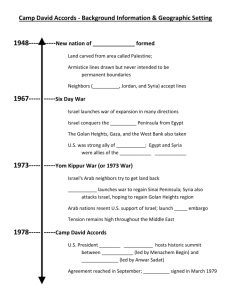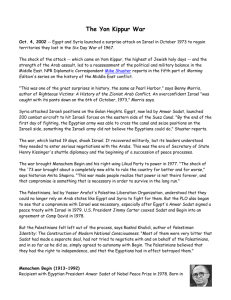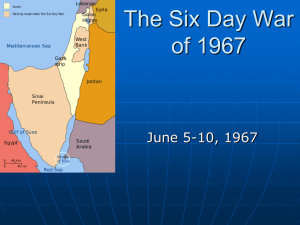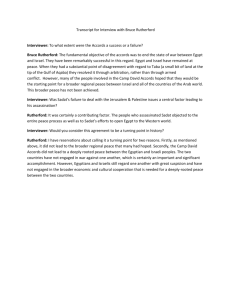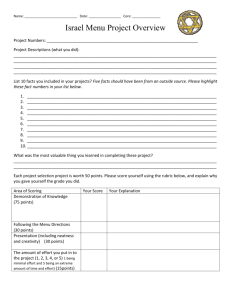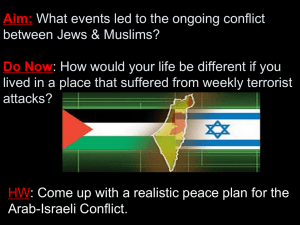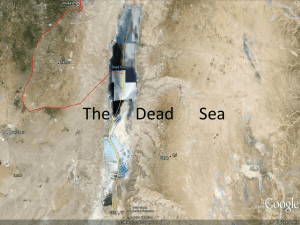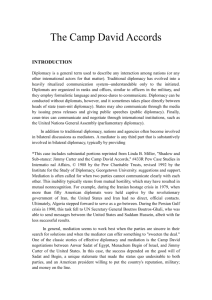Camp David Accords Teacher Notes
advertisement
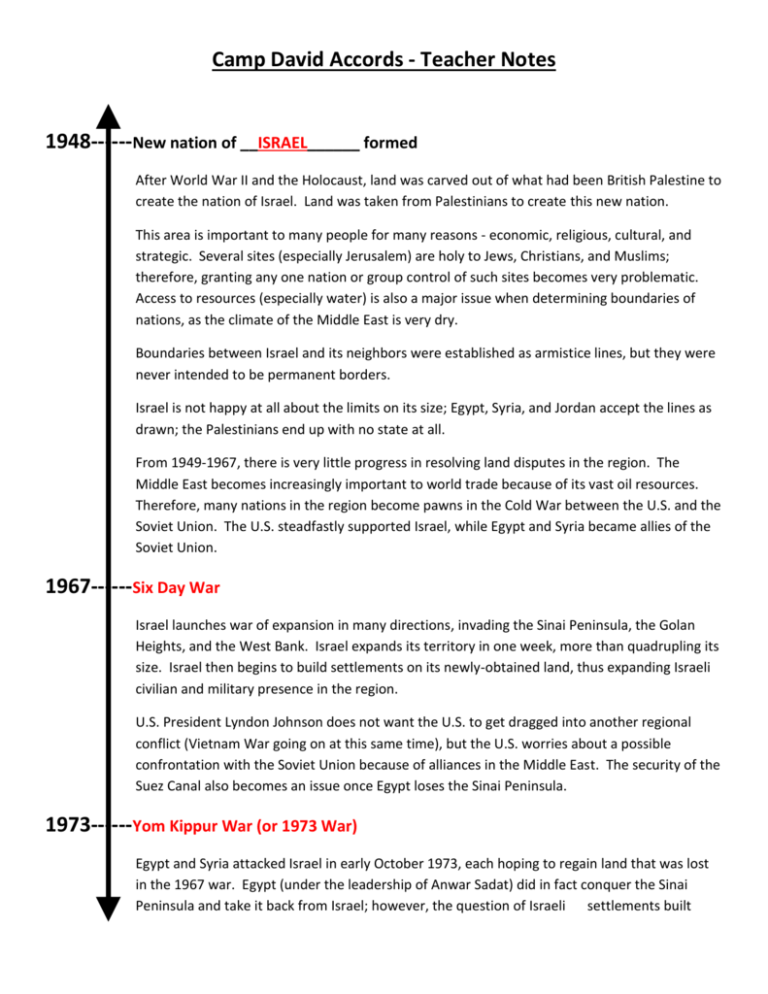
Camp David Accords - Teacher Notes 1948------New nation of __ISRAEL______ formed After World War II and the Holocaust, land was carved out of what had been British Palestine to create the nation of Israel. Land was taken from Palestinians to create this new nation. This area is important to many people for many reasons - economic, religious, cultural, and strategic. Several sites (especially Jerusalem) are holy to Jews, Christians, and Muslims; therefore, granting any one nation or group control of such sites becomes very problematic. Access to resources (especially water) is also a major issue when determining boundaries of nations, as the climate of the Middle East is very dry. Boundaries between Israel and its neighbors were established as armistice lines, but they were never intended to be permanent borders. Israel is not happy at all about the limits on its size; Egypt, Syria, and Jordan accept the lines as drawn; the Palestinians end up with no state at all. From 1949-1967, there is very little progress in resolving land disputes in the region. The Middle East becomes increasingly important to world trade because of its vast oil resources. Therefore, many nations in the region become pawns in the Cold War between the U.S. and the Soviet Union. The U.S. steadfastly supported Israel, while Egypt and Syria became allies of the Soviet Union. 1967------Six Day War Israel launches war of expansion in many directions, invading the Sinai Peninsula, the Golan Heights, and the West Bank. Israel expands its territory in one week, more than quadrupling its size. Israel then begins to build settlements on its newly-obtained land, thus expanding Israeli civilian and military presence in the region. U.S. President Lyndon Johnson does not want the U.S. to get dragged into another regional conflict (Vietnam War going on at this same time), but the U.S. worries about a possible confrontation with the Soviet Union because of alliances in the Middle East. The security of the Suez Canal also becomes an issue once Egypt loses the Sinai Peninsula. 1973------Yom Kippur War (or 1973 War) Egypt and Syria attacked Israel in early October 1973, each hoping to regain land that was lost in the 1967 war. Egypt (under the leadership of Anwar Sadat) did in fact conquer the Sinai Peninsula and take it back from Israel; however, the question of Israeli settlements built there would remain problematic. Syria pushed Israeli forces out of the Golan Heights temporarily, but Israel regained control of the region. A ceasefire was in place by later October. The United States, still a strong ally of Israel, again saw this as a very dangerous situation. President Richard Nixon had recently opened relations with China and improved relations between the U.S. and the Soviet Union. The U.S. did not want to risk these improved relationships by getting dragged into a regional war. Because of U.S. support for Israel, Arab nations launched an oil embargo in late 1973. This led to gas shortages and rapid price increases in the United States, affecting the American economy for quite some time. Nixon committed the U.S. to getting involved in the Middle East process, and the embargo was lifted in mid-March. This is very important for President Carter a few years later, as Americans will remember well the impact of the 1973-74 oil embargo. When Saudi Arabia decides to decrease production in 1979 and the Iranian Revolution threatens oil supplies from Iran, similar gas shortages and lines at the pumps will remind Americans of 197374. 1978------Camp David Accords President Carter wanted a comprehensive Middle East peace plan - something that many saw as not just ambitious but also as impossible. Carter met with several heads of state in the region in 1977 (Israel's Yitzhak Rabin and Menachem Begin, Syria's Hafez Assad, Saudi Arabia's King Fahd, Egypt's Anwar Sadat, Jordan's King Hussein). Carter realized there were three major issues that had to be resolved in order to achieve a comprehensive peace: Israeli security, land ownership, and Palestinian rights. Anwar Sadat made a bold move when he announced in late 1977 that he would go to Israel as a sign of good faith and a gesture toward achieving peace. While Sadat's visit changed the shape of the relationship between Israel and its Arab nations, no real progress was achieved in negotiations over the big issues. President Carter established a strong friendship and trust with Sadat; he saw Sadat's visit to Israel as a sign that peace between Egypt and Israel was indeed possible. He was more frustrated by the hard line that Menachem Begin seemed to be taking as Israel's leader. In July 1978, Carter began to plan for a summit at Camp David. On September 5, both Sadat and Begin arrived at Camp David and negotiations began. Within just two or three days, Carter realized that the two men simply did not like each other and that their personalities were incompatible. For the next several days, negotiations took place among senior advisors of both governments, but the two men did not negotiate face to face again. It took 13 long, tense days for an agreement to be reached - a "framework for peace" between Israel and Egypt. An actual treaty would not be signed for six more months. President Carter made trips to both Israel and Egypt to persuade Begin, Sadat, and other political leaders. The treaty was signed at a White House ceremony in March 1979.
